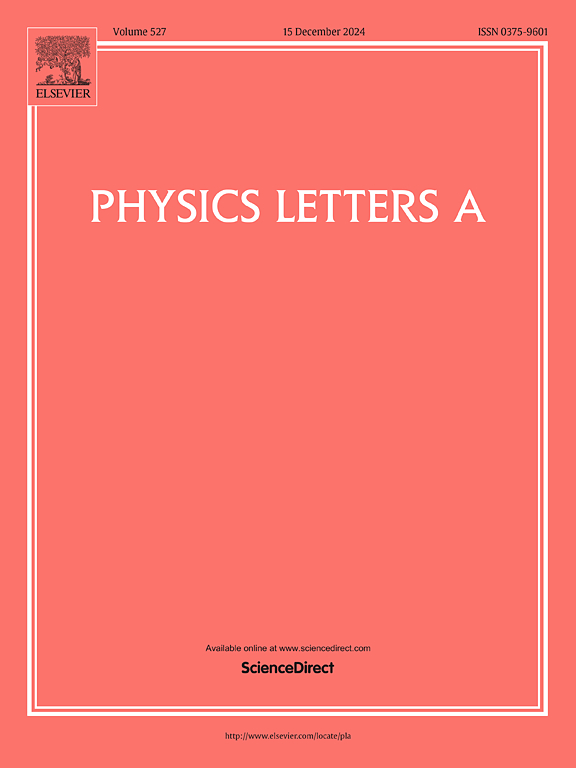Dynamical behavior of passive particles with harmonic, viscous, and correlated Gaussian forces
IF 2.3
3区 物理与天体物理
Q2 PHYSICS, MULTIDISCIPLINARY
引用次数: 0
Abstract
In this paper, we study the Navier-Stokes equation and the Burgers equation for the dynamical motion of a passive particle with harmonic and viscous forces, subject to an exponentially correlated Gaussian force. As deriving the Fokker-Planck equation for the joint probability density of a passive particle, we importantly find the solution of the joint probability density by using double Fourier transforms in three-time domains, and the moments from the derived moment equation are numerically calculated. As a result, the dynamical motion of a passive particle for the probability density having two variables of the displacement and the velocity in the short-time domain takes the super-diffusive form, whereas the distribution in the long-time domain is attained to be Gaussian by analyzing only from the velocity probability density. The moment particularly scales as in the Navier-Stokes equation for (correlation time), while the moment in Burgers equation only with correlated Gaussian force reduces to in and.
具有谐波、粘性和相关高斯力的被动粒子的动力学行为
本文研究了受指数相关高斯力作用下具有谐波力和粘性力的被动粒子的动力学运动的Navier-Stokes方程和Burgers方程。在推导被动粒子联合概率密度的Fokker-Planck方程时,重点利用三时域的二重傅立叶变换求出了联合概率密度的解,并对所导出的矩方程进行了数值计算。结果表明,在具有位移和速度两个变量的概率密度下,被动粒子的动态运动在短时域中呈超扩散形式,而在长时域中仅从速度概率密度进行分析,得到其分布为高斯分布。当τ=0 (τ=相关时间)时,在Navier-Stokes方程中矩μ2,2的尺度为~ t5,而在仅考虑相关高斯力的Burgers方程中,当τ >;>;τ和τ=0时,矩μ2,2 ~ t4的尺度减小为μ2,2 ~ t4。
本文章由计算机程序翻译,如有差异,请以英文原文为准。
求助全文
约1分钟内获得全文
求助全文
来源期刊

Physics Letters A
物理-物理:综合
CiteScore
5.10
自引率
3.80%
发文量
493
审稿时长
30 days
期刊介绍:
Physics Letters A offers an exciting publication outlet for novel and frontier physics. It encourages the submission of new research on: condensed matter physics, theoretical physics, nonlinear science, statistical physics, mathematical and computational physics, general and cross-disciplinary physics (including foundations), atomic, molecular and cluster physics, plasma and fluid physics, optical physics, biological physics and nanoscience. No articles on High Energy and Nuclear Physics are published in Physics Letters A. The journal''s high standard and wide dissemination ensures a broad readership amongst the physics community. Rapid publication times and flexible length restrictions give Physics Letters A the edge over other journals in the field.
 求助内容:
求助内容: 应助结果提醒方式:
应助结果提醒方式:


